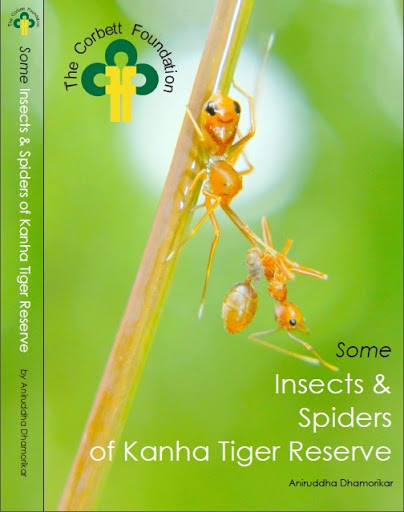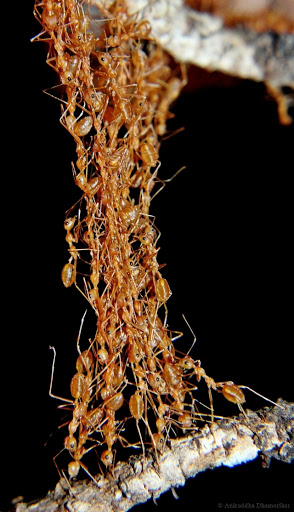Some Insects and Spiders of Kanha Tiger Reserve
 |
| This report is published by The Corbett Foundation Cover: Amyciaea forticeps feeding on an Oecophyla smargdina with a Phorid fly sharing in the meal |
· Ants are the most common social insects of KTR,
and crickets are the most common solitary ground-dwelling insects.
· There are several first records for Kanha, and
central India as a whole: Methocha sp.
(Hymenoptera), Pseudagrion splendidissima
(Odonata), Tropidomantis sp.
(Mantodea), Forcipula sp.
(Dermaptera), Cardiophorus notatus
and Camposternus sp. (Coleoptera), Mikia tepens (Diptera).
· Covers over 436 photographs of insects including 73 species of
butterflies common to Kanha, 9 species of tiger beetles, 47 species of true
bugs, 22 species of ants, 24 of grasshoppers, 40 of dragonflies and
damselflies, and 9 of praying mantises.
 |
| A young Phintella sp. Jumping Spider appears to be sleeping - or undergoing a period of inactivity called quiescence in a peculiar way probably documented for the first time. |
· Lynx spiders are the most common spiders of
Kanha, followed by wolf spider, jumping spider, orb weavers, and crab spiders.
· There are a few first records for Kanha, and
Madhya Pradesh as a whole: Deinopis sp. (probably a new species belonging to
Deinopidae) and Castianeria sp.(belonging to Corinnidae).
· Covers over 114 colour photographs of spiders,
including 30 species of jumping spiders, 7 of wolf spiders, 9 of orb weavers,
and others including a Deinopid, Stenochilid, and Oonopid.
 |
| Weaver ants, Oecophylla smargdina, form a temporary bridge between two Mahua branches to carry food. Bridge formation is a rare trait only seen in ants, other than humans. |
· This document is a work in progress. It was
undertaken solely through on-field observations and with the use of on-field
photography – no specimens were collected, hence identifications are left blank
wherever it was not possible to deduce a confirmed identity of the individual.
This is more like a workbook than a proper book, for it only serves to act as a
prelude to future in-depth studies about the least known fauna of Kanha Tiger
Reserve.
· It provides a list of 35 species of flora which
can be planted to attract insects, along with several recommendations in the
form of discussions which can be applied to any landscape.
· Other specifications: 207 pages. Colour. A5
paper.

Comments
Post a Comment